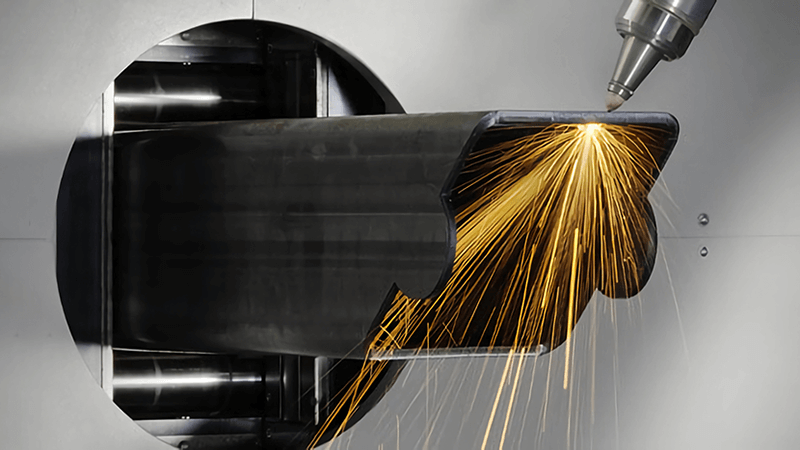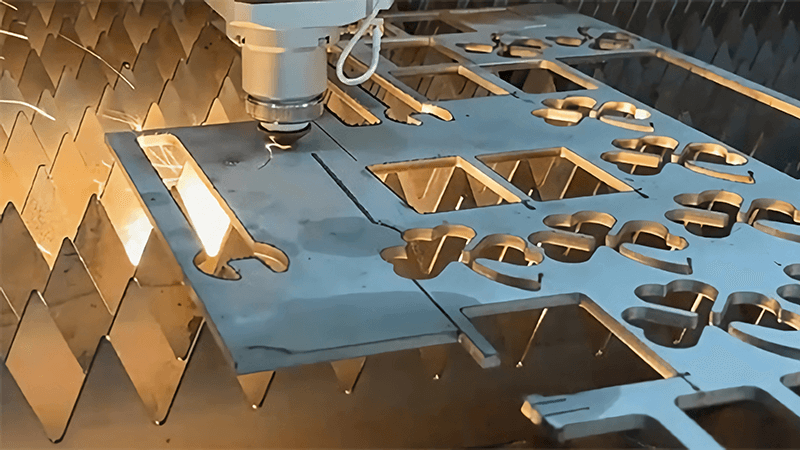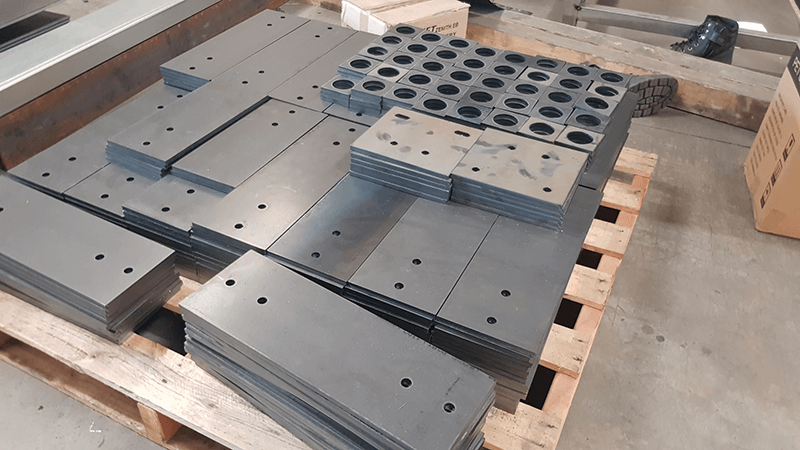When I first speak with managers about fiber lasers, I notice the same problem: traditional cutting slows them down and creates waste. Many feel stuck because they need accuracy and speed but do not know how fiber lasers solve this.
The working principle of a fiber laser cutting machine is based on a diode-pumped fiber resonator that amplifies light, producing a high-power beam focused to melt or vaporize material, while assist gas clears the cut.
At Kirin Laser, we always explain this in simple terms: the beam does the cutting, the fiber ensures precision, and the gas makes the process clean. This mix is why fiber lasers deliver stable results.

What is the principle of laser cutting?
Many people struggle with vague definitions. I often meet procurement managers who hear “laser” but imagine it is just heat. That misunderstanding can delay their investment.
The principle of laser cutting is using a concentrated beam of light, generated and amplified inside a fiber, to melt or vaporize material along a precise path. Assist gas then removes molten material, leaving a clean and accurate cut.
Breaking it down
Laser cutting is not only about heat. It is about control. The fiber laser beam is narrow, stable, and consistent. This allows it to cut metals, plastics, and other materials with repeatable results.
Comparison table
| Method | Energy Source | Cutting Style | Accuracy |
|---|---|---|---|
| Mechanical Cutting | Blades | Contact-based | Limited by wear |
| Plasma Cutting | Ionized Gas | Thermal, broader | Moderate |
| Fiber Laser Cutting1 | Light Beam | Non-contact, clean | Very high |
Deeper insight
I always explain that the core is a doped fiber resonator2 pumped by diode lasers. This design amplifies light through stimulated emission, delivering a narrow, high-power beam to the workpiece. At the focus point, the material melts or vaporizes. The assist gas clears debris. That is why the cut edges are smooth, sharp, and consistent.
At Kirin Laser, we view this not only as physics but as a promise of reliability. Our machines are built to make this principle practical for industries where mistakes are costly.

How does a laser cutter work step by step?
When new clients look at a fiber laser, the process feels mysterious. I remember one engineer telling me he thought the beam simply “burned” the steel. That oversimplification hides the real workflow.
A fiber laser cutter works step by step by generating light in a diode, amplifying it in a doped fiber, delivering it through a cable, focusing it with optics onto material, melting or vaporizing it, and using assist gas to clear the kerf.
Step flow
- Pump source: Diodes generate seed light.
- Amplification: Light travels through rare-earth doped fiber3, gaining energy.
- Beam delivery: The fiber cable directs the high-power beam.
- Focusing: Lenses condense the beam to a micro-spot.
- Interaction: Material melts or vaporizes.
- Assist gas: Oxygen, nitrogen, or air clears the molten pool.
Why this matters
Because the process is step-based and digital, operators can control every parameter. That control creates repeatability and precision.
Story from my experience
I once worked with a client struggling with inconsistent marks on stainless steel parts. Their old system left blurry logos and slowed production. After switching to a fiber laser marking machine4, every mark came out crisp and permanent, even at high speeds. It cut their downtime and boosted their confidence in delivering quality.
At Kirin Laser, we design our fiber laser systems so that this workflow is smooth for both small shops and large manufacturers.

How thick can a fiber laser cut?
This is one of the first questions buyers ask me. They want to know if fiber lasers can handle their material range. Some fear the beam will only cut thin sheets.
A fiber laser can cut from very thin foils up to 40mm thick steel, depending on the power rating, assist gas, and material type. The most common range for industrial use is 1mm to 25mm.
Power and thickness relationship
| Power Level | Carbon Steel Thickness5 | Stainless Steel Thickness | Aluminum Thickness |
|---|---|---|---|
| 1kW | up to 6mm | up to 3mm | up to 2mm |
| 3kW | up to 16mm | up to 8mm | up to 6mm |
| 6kW | up to 25mm | up to 16mm | up to 14mm |
| 12kW+ | up to 40mm | up to 30mm | up to 25mm |
Deeper perspective
When you think about thickness, it is not just about power. It is also about gas choice, focus, and cutting speed. For example, oxygen helps with thick carbon steel because it creates a reactive cut. Nitrogen is better for stainless steel6 because it avoids oxidation.
At Kirin Laser, we guide each client to match power level with their real material needs. A machine that is too powerful wastes money. A machine that is too weak creates limits. Our job is to find the balance.

What are the basics of laser cutting?
For newcomers, the term “laser cutting” can feel abstract. Many expect it to be complex or unsafe. I always explain the basics in the simplest way possible.
The basics of laser cutting are generating a controlled beam, focusing it onto material, melting or vaporizing the material, and using gas to clear the path. The process is precise, contactless, and digitally controlled.
Core elements of the basics
| Element | Role in Process |
|---|---|
| Laser Source7 | Creates the beam through fiber |
| Optics | Focuses beam into fine spot |
| Material | Receives the energy for cutting |
| Assist Gas | Clears melt and shapes edge quality |
| CNC Control8 | Directs path digitally |
Why basics matter
Understanding the basics makes it easier for managers to plan for training, safety, and production. Operators learn quickly when the process is explained in these terms.
My deeper view
In my own work, I have seen how clarity about basics helps clients trust the machine. Once they realize it is not magic but controlled physics, they adopt it faster.
At Kirin Laser, we teach every buyer these basics before delivery. This ensures smoother integration, less downtime, and faster return on investment.

Conclusion
From principle to practice, fiber laser cutting machines9 work because they amplify light in fiber, focus it with precision, and use gas to keep cuts clean. At Kirin Laser, we see this not only as a technology but as a tool for growth. The machines cut thick or thin, simple or complex, always with stability. This is why fiber laser technology is the future of cutting, and why we build every system with precision in every beam.
-
Explore this link to understand the benefits of Fiber Laser Cutting, including precision and efficiency in various applications. ↩
-
Learn about the doped fiber resonator's role in laser technology for deeper insights into its efficiency and performance. ↩
-
Learn about rare-earth doped fiber to see how it plays a crucial role in laser amplification and performance. ↩
-
Explore this link to understand how fiber laser marking machines enhance precision and efficiency in manufacturing. ↩
-
Understanding this relationship can help optimize cutting processes and material usage. ↩
-
Exploring this can enhance your knowledge of effective cutting techniques and material selection. ↩
-
Explore this link to understand how a Laser Source functions and its importance in cutting technology. ↩
-
Learn about CNC Control's role in improving cutting accuracy and efficiency in manufacturing. ↩
-
Find the best laser cutting machine and laser cutting solutions from Kirin Laser, clicking this link to get all your needs. ↩





